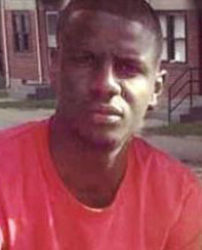WASHINGTON, (Reuters) – Baltimore officials yesterday pledged to carry out sweeping police department reforms after a scathing U.S. Justice Department report found that officers in the majority-black city routinely violated the civil rights of black residents.

Vanita Gupta, the head of the Justice Department’s civil rights division, said Baltimore and federal officials have agreed on a legal framework for police department changes that would be overseen by an independent monitor.
The report on the 2,600-officer department released on Tuesday found that black residents were regularly subjected to stops as pedestrians and motorists, arrests, strip searches and excessive force in violation of U.S. constitutional rights and federal anti-discrimination laws.
The 163-page report was prompted by the April 2015 death of a black man, Freddie Gray, from a neck injury suffered in police custody.
Gray’s death was one of a series of incidents in various cities in the past two years that have raised questions about racial discrimination in U.S. law enforcement.
Mayor Stephanie Rawlings-Blake, who is black, told a city hall news conference that Baltimore would implement a reform plan in the next few months.
“It’s not going to be easy to reform the department, and it’s not going to be quick,” Rawlings-Blake said.
Rawlings-Blake said the police department had already revised 26 procedures, including changes in policies, training, a body-camera program and use-of-force guidelines.
Gupta said she expected quick progress toward a final agreement with the city on police reforms. Rawlings-Blake said Baltimore expected to spend between $5 million and $10 million a year to implement the agreement.
The framework agreement called for improved training of officers and data collection to ensure they are adhering to legal and constitutional standards. It also highlighted technology to allow better monitoring of officers, and strategies to rebuild relationships with city residents.
The report found that police stopped black residents three times as often as white residents. Sixty-three percent of Baltimore residents are black, but the report found blacks faced 86 percent of charges by police. Black motorists accounted for 82 percent of traffic stops even though they make up only 60 percent of drivers.
In one of numerous incidents cited in the report, police stopped a female motorist merely for a missing headlight. Officers performed a strip search, including a body-cavity probe, and no evidence of wrongdoing was found.
The report said police had made more than 300,000 recorded pedestrian stops from January 2010 to May last year in the city of about 621,000 people, mostly in black neighborhoods. It said seven black men were stopped more than 30 times apiece during that period.
Police Commissioner Kevin Davis, who is white, said the department already has fired six officers this year as part of reform efforts.
Police arrested Gray for fleeing unprovoked in a high-crime area. He suffered a fatal neck injury in a police van. His death sparked protests and rioting.
Six officers were charged in Gray’s death. Four trials ended without a conviction. Prosecutors dropped the remaining charges last month.
Tessa Hill-Aston, president of the Baltimore branch of the National Association for the Advancement of Colored People civil rights group, called the Justice Department report long overdue.
“We’re going in the right direction, but it’s going to be a while for the community to trust the police,” Hill-Aston said.




